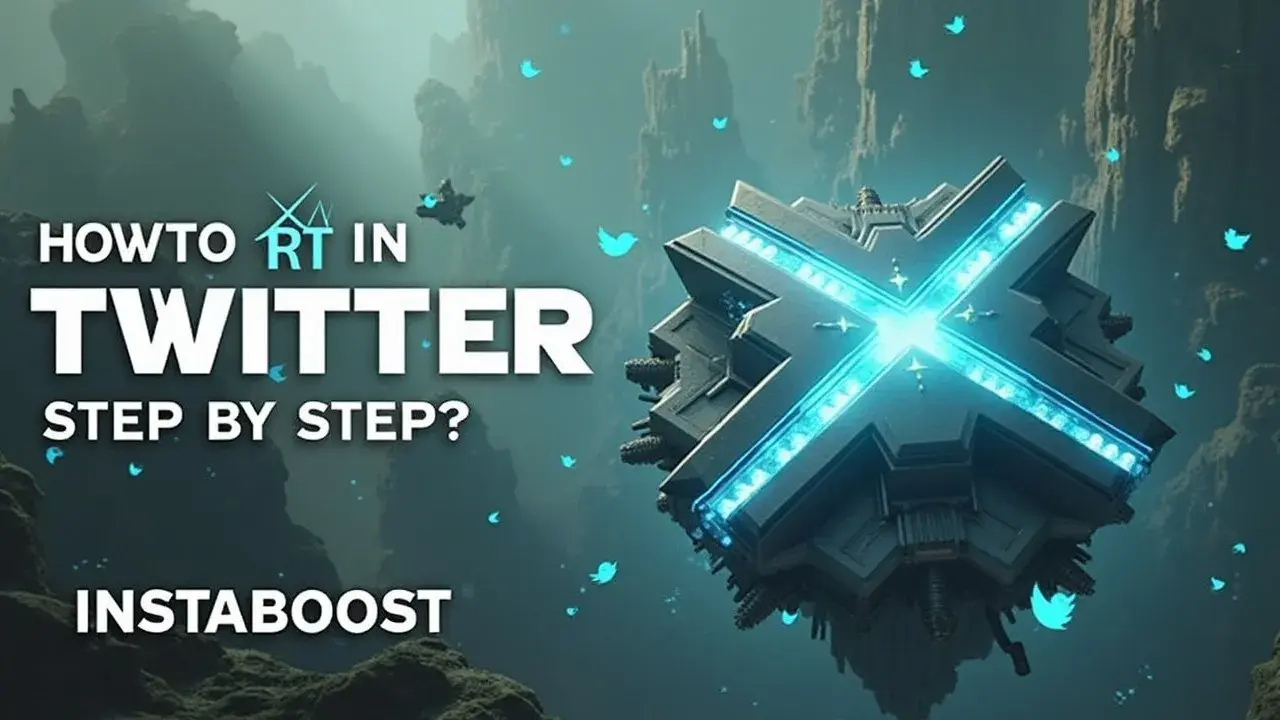How to Retweet on X (Twitter) Step by Step
Retweeting works best when guided by a clear goal and a simple routine. Begin by sharing one post in the first hour, then add concise context to clarify why it matters. Consistent retweets help surface a coherent voice, make threads easier to follow, and enable week‑to‑week growth tracking. Watching comments, spotting early replies, and reading audience signals support better timing and relevant replies, forming a smart path to steady growth.
Retweeting With Intent: Build Reach Without Losing Your Voice
Retweeting isn’t a reflex. It’s a deliberate signal that shapes how people read you on Twitter (X) and whether the algorithm keeps your posts in circulation. If you’re here to learn how to RT in Twitter step by step, start by deciding what each retweet should do for you. Amplify a creator you respect, back a point with a trusted source, or seed a conversation you’ll actively join. The mechanics are simple, and the leverage shows up when you pair every RT with clear context, clean analytics, and timing that matches your audience’s habits. Quoting (QRT) with one sharp line often earns more retention than bare RTs because it trains followers to expect your perspective, not just your curation.
Scan for early replies and genuine comments on the original tweet. Those are real engagement signals that the post has momentum worth riding. If you boost with targeted promotion, keep it reputable and matched to intent, and treat tools you already trust – whether in-app or third-party, such as order Twitter promotion – https://instaboost.ge/en/twitter – as extensions of your strategy, not replacements. Use an awareness push for a broad idea, or a tight audience for a niche take, then measure outcomes beyond vanity impressions. Collaborating with creators by replying, threading, or co-signing a post compounds reach when your angles complement, not duplicate.
Safeguards matter. If a headline is spicy, read the thread, check the source, and add a clarifying line so followers don’t mistake amplification for endorsement. A useful move is to schedule a small context loop. Retweet once, then revisit within an hour to add a short follow-up reply or link that nudges conversation toward your lane. That rhythm signals consistency to both people and the ranking system, helping your retweets surface your voice rather than drown it.

Earn Trust Before You Borrow Reach
Sometimes credibility means showing your scars. Share a retweet that aged badly, explain what you missed, and how your process has changed. That kind of transparency turns followers into collaborators, and the algorithm notices when people linger, reply, and come back. If you’re learning how to RT in Twitter step by step, credibility isn’t a vibe – it’s auditability. Say why you’re amplifying, cite the source, and add a line that shows your stake in the topic. Pair each retweet with a lightweight check.
Open the thread, look past the top likes, and scan replies from qualified voices you trust. When it’s a hot take, quote-tweet with one clear lens – a data point, lived experience, or a counterexample – so your audience gets context that encourages retention signals. For momentum, collaborate. Tag a creator you respect, ask one specific question, and be ready to answer early replies. That loop strengthens distribution without diluting your voice.
Promotion can help when it matches intent – boost a post that already earns saves and real comments, and use clean analytics or a reputable tool to confirm that engaged impressions come from the audience you want, and resist shortcuts that treat people as metrics, even when you see others trying to buy twitter fans as a proxy for resonance. If you’re worried about boosting something risky, throttle exposure with timing, limit tags, and measure downstream effects before you scale. Credibility compounds. Consistent attributions, fast corrections, and visible learning make your feed a place people trust. That trust lets you borrow reach without borrowing doubt, and it turns every RT into a signal that you’re curating with purpose, not chasing noise.
Time Your RT's to Ride the Second Wave
Every playbook expires, so treat retweet timing as a working hypothesis, not a rule. If you’re here to learn how to RT in Twitter step by step, start by mapping two windows: the creator’s peak and your audience’s peak. You’re not copying their cadence. You’re catching the second wave, when early engagement has validated the post and your followers are most likely to respond. Scan replies and quote-tweets first – use “see comments” views and creator analytics if available – to confirm the conversation is still active.
Then pick your lever: a straight RT to compound reach, or a Quote with one specific takeaway that invites replies. Smart use pairs your RT with retention signals – a crisp line that frames why it matters, a question that can be answered in one tweet, and a promise to circle back with a short thread if replies heat up. If you use paid boosts or Creator Collaborations, align them to posts that already earned saves or meaningful comments, and remember that some teams quietly purchase engagement on X while they test whether a post can hold attention organically. Targeted promotion accelerates momentum when fit is proven and your analytics are clean.
Keep a simple testing loop. Try three post times this week, note which slot drives replies-per-impression, and re-run next week. When a post starts to age out, pivot to a Quote that updates the take or adds data so your signal stays fresh. The non-obvious edge is that your RT becomes recommendation fuel when people linger on your added context more than the original. That’s how you build reach without losing your voice and keep the algorithm recirculating your posts.
Stop Treating Retweets Like Endorsements
It looked like traction, but it was noise. I once boosted a viral thread that matched my take but not my standards. The ratio flipped overnight, and I spent the next day adding context I should’ve included up front. Lesson learned: if you’re figuring out how to RT in Twitter step by step, add a small friction check before you hit retweet. I scan replies for signal density – credible sources, informed counters, and whether the creator answers tough questions. I add a top-line note or a quote-tweet that states my angle, links a reputable source, and sets an expectation for updates if facts shift.
That framing invites real comments, which feed retention signals the algorithm values more than hollow impressions. Timing still matters, but now I pair second-wave windows with a lightweight safety pass: read the top 20 replies, check the creator’s last week for patterns, verify the core claim with one clean link, and, when I care about incremental reach, weigh whether the pattern looks organic or just a tactic to get more views on X before I attach my handle. If I’m running paid promotion or testing an accelerant, I keep spend tight to a small, time-boxed cohort, tag it clearly, and log outcomes in analytics so I can separate organic pull from ad lift.
That protects brand equity and keeps the testing loop honest. When a post ages poorly, I don’t delete by default. I update the quote with what changed and what I missed, then tag the creator for a short back-and-forth. That collaboration, plus visible correction, keeps followers engaged and returning, which lifts session depth more than a perfect hit rate. Smart use beats safe silence. Retweet boldly when the claim is verifiable, your context adds clarity, and your safeguards can catch a wobble before it becomes a mess.
Make Retweets a System You Can Trust Tomorrow
This isn’t a pitch – it’s a permission slip. You came to learn how to RT on Twitter step by step, so close the loop: set a simple weekly rhythm, measure it clearly, and keep only what moves. Build a lightweight cadence – one qualified RT per day, add context on two of them, and a short reply on one. Tag your RTs with a consistent UTM or note so your analytics separate second-wave boosts from everything else. Review by saves, profile visits, and replies – those are retention signals, not just reach. If you pair with paid promotion, use it sparingly to extend early momentum from reputable placements, and remember that services such as cheap retweets for tweets don’t fix a weak hook or misaligned framing.
It works when your comments thread already shows real conversation and audience fit, not when a post never hooked. Collaborate with creators whose standards match yours and trade context instead of blind amplification. A quick DM aligns framing and reduces cleanup later. Keep your timing hypothesis alive: cross-check the creator’s peak against your audience’s peak weekly using Twitter Analytics and what you see when you check comments on Twitter posts. Early replies reveal if substance beats novelty. When a post pops, add a quote that pulls one concrete takeaway, not a summary.
When it stalls, archive the pattern, not the outcome. Build safeguards – a 30-second friction check for source, screenshot receipts for claims, and a cooling shelf for spicy takes you might regret. The non-obvious bit: growth from RTs compounds through familiarity, not virality. Steady, contextual boosts train your followers to expect value when they see your handle. Close the loop every Friday, prune tactics that didn’t earn replies, and keep the system small enough to run on busy weeks.















